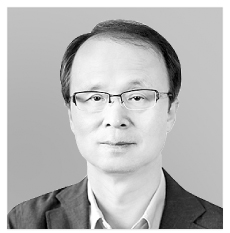Saving Samsung

The author is a professor of electrical engineering at Sungkyunkwan University.
Electronics and automobiles are the front line of Korea’s exports. The economy largely hinges on shipments of these two products.
According to the Institute for International Trade under the Korea International Trade Association, electronics and home appliances accounted for 11.8 percent of the country’s exports in 2017, while automobiles, including finished cars and parts, took up 11.6 percent. With these mainstay products struggling, that spells trouble for the Korean economy.
Korean cars lost big in China with the introduction of retaliatory measures and local Chinese brands last year, and now they are being threatened by sweeping tariffs in the United States.
Electronics are also under fire. Samsung Electronics cannot be sure how long it can sustain the top market position in smartphones. It is waging a cutthroat war with Apple in the shrinking premium phone segment and struggling to fend off fast-rising Chinese companies competing with equally qualified specs at affordable price ranges. From the final quarter of last year, Samsung’s share in the world’s largest smartphone market, China, was a pitiful 0.8 percent.
Meanwhile, Chinese names like Huawei and Xiaomi are making big strides at home and abroad. According to IDC, Huawei has elbowed out Apple to become the world’s second-largest smartphone seller in the second quarter.
Samsung underwent three transitional and challenging periods in its mobile phone business. Its devices were shunned after Apple’s iPhone took the world by storm upon its arrival in November 2009. The company’s first copycat of the iPhone was disastrous.
But Samsung bounced back with its knack for adding value to proven technology. It entered a partnership with Google, and with the phone running on Android, the company could focus on what it does best: hardware.
The second challenge arrived with the Galaxy S4. Samsung shifted its focus to software and services. All of its innovation then peaked with the S7. The company fixed all the functions that did not please consumers and streamlined its applications. Waterproofing and slots for extra memory were added. The phone could also be used to experience virtual reality.
Samsung’s third challenge is ongoing. Its S8 and S9 failed to wow consumers with its hardly distinguishing features. Can Samsung find a breakthrough in a smartphone market that can no longer inspire and lure consumers to pay hefty prices for new phones?
A new type of appealing services can hold the answer. Samsung should pay full attention to the voices of young consumers and make the most of its unrivaled edge in components to come up with innovative parts and add differentiated value to its finished hardware.
Artificial intelligence services can also be a winning feature. The company must aim to boost its distinct vocal and facial recognition features and translation services. It must upgrade its voice assistant Bixby. Its smartphone must be able to perform services typically backed by servers. The company, which is the dominant maker of memory chips, should develop an application processor customized to drive the AI core of Bixby.
The company’s smartphone business requires approaching it as a system rather than merely a handheld gadget. Smartphones, which hardly leave the human hand, can act as the central server to control home appliances in the age of connectivity and the Internet of Things. Anyone should be able to remotely control televisions, refrigerators and air-conditioners through their phone.
IoT must be intelligence-driven. The technology provider must contemplate what meaningful services it can offer in a connected environment. Samsung is in the best position to do so because it not only makes smartphones but also home appliances. Although the latest products come with smart applications, accessibility from the phone is still limited for most consumers.
Samsung must strengthen its non-premium line as well. It must add its typical sophistication to those products to compete with Chinese rivals. The market potential for smartphones has shifted from developed countries to emerging economies. Samsung must develop phones customized for customers of different regions.
Samsung faces the challenge of a stagnant global market and competition from Chinese players, but the company has the prowess to prevail over these trials because of its strengths in components and IoT. It must come up with advanced trend-setting smartphone innovations and add momentum to Korean electronics and the economy.
Translation by the Korea JoongAng Daily staff.
JoongAng Ilbo, Aug. 9, Page 29










with the Korea JoongAng Daily
To write comments, please log in to one of the accounts.
Standards Board Policy (0/250자)